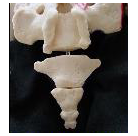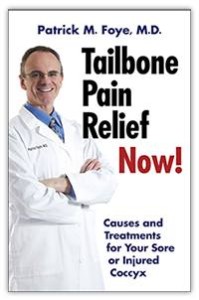Re: Response to coccyx injections.
Hi, Folks.
Overall, the specific type of coccyx injection varies from patient to patient, along with differences in how the injection is performed based upon an individual patient’s anatomy and an individual patient’s diagnosis.
For example, regarding anatomy, a ganglion par block would be perform differently in someone who had joint fusion between the sacrum and coccyx versus how it would be done in someone who had joint fusion between the first and second bone of the coccyx, and it would be done differently again if they had fusion of the entire coccyx.
Also, depending on the patient’s diagnosis, the ganglion Impar injection may or may not also include steroid injection (anti-inflammatory) either at the ganglion Impar, at or around an abnormal joint, or at/around a distal coccyx bone spur, etc.
While the majority of patient’s respond favorably to an appropriately selected injection, I will be the first to admit that unfortunately no treatment for coccyx pain is guaranteed to provide relief for all patients. Many patients do well with each of the different forms of treatments, such as cushions, medications by mouth, local icing, various injections, pelvic floor physical therapy, surgical removal of the coccyx (coccygectomy), etc., but unfortunately there is no single treatment that helps everyone. There are unfortunately times where the pain continues to worsen despite treatments, and even instances where a given treatment many exacerbate symptoms.
Ideally, we would be able to predict which patient would respond best to which type of injections. Several years ago, I analyzed responses to hundreds of injections in hundreds of patients, to see what factors might best predict how a given individual would respond to various types of injections. We looked at factors such as each patient’s age, gender, weight (body mass index), acute versus chronic pain (I’ve seen some patients with coccyx pain that started just hours before they were sent to me, and other patients who have had coccyx pain for almost 50 years before seeing me), diagnosis (fractures, dislocations, dynamic instability, bone spurs, etc.), previously tried treatments, etc..
The general outcome was that most patients responded well to injections regardless of any of the various factors mentioned above. Patients with the shortest duration of symptoms tended to respond most favorably and tended to obtain the most complete and long-lasting/permanent resolution of symptoms. (Meanwhile, many patients with years/decades of pain can still get relief, just that their success rates at doing so is not as great as it is for those with a shorter duration of symptoms.)
Unfortunately, for every category of patients there were unfortunately some who failed to obtain adequate relief despite all of our best efforts at providing nonsurgical care. In general, those patients become potential candidates for surgical treatment (coccygectomy) if these symptoms are severe enough to warrant that. As we know, coccygectomy comes with its own potential complications after surgery, and although the majority of appropriately-selected patients do indeed obtain partial relief of coccydynia, (and even some who get complete or nearly complete relief), unfortunately most coccydynia patients still have some degree of coccyx pain despite surgery and there are some patients who get little or no relief despite undergoing the surgery.
I guess the take-home message is that it usually makes sense to use a stepwise approach, starting with the least invasive, nonsurgical approaches first (cushions, injections, etc.). Then only progress up the treatment ladder if a given treatment fails to give adequate relief. Of course each person’s response is different, but the paragraphs above summarize the types of responses that are usually seen both in my practice and from what is published in the peer-reviewed medical literature.
Medical care is continually advancing, so hopefully in the near future we will be better able to provide more complete relief for more and more patients. I am eager to do so and I give you all my commitment that I am working towards those goals, not just for my own patients but for people worldwide who suffer with this. So, while I find it gratifying to have been able to help so many over the years, it deeply concerns me that not everyone gets adequate relief and I continue to strive to find solutions/relief for those who are still seeking it.
–Patrick Foye, M.D.
To come to Dr. Foye’s Tailbone Pain Center:
- Get expert medical care for your tailbone problem. Here’s what you need know: https://tailbonedoctor.com/prepare-for-your-visit/
Tailbone Pain Book:
To get your copy of Dr. Foye’s book, “Tailbone Pain Relief Now!” click on this link: www.TailbonePainBook.com
- Coccygectomy: Expected Recovery and Return to Work after surgery for coccyx pain, tailbone pain. - November 28, 2023
- PRP Platelet Rich Plasma or Prolotherapy for Tailbone Pain, Coccyx Pain - October 25, 2023
- Reasons for Normal X-rays and MRI Despite Tailbone Pain, Coccyx Pain - October 3, 2023


